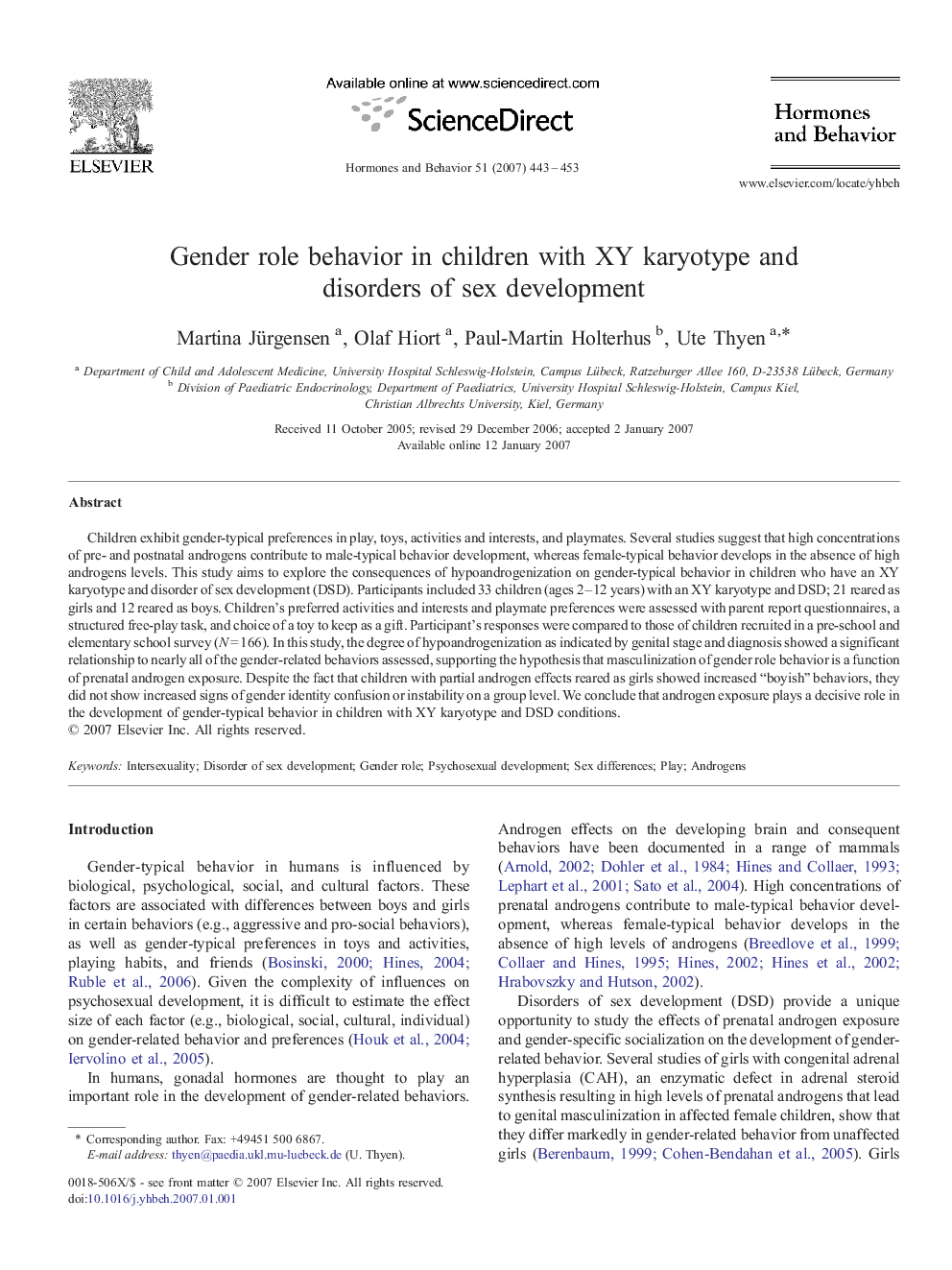| کد مقاله | کد نشریه | سال انتشار | مقاله انگلیسی | نسخه تمام متن |
|---|---|---|---|---|
| 323845 | 540801 | 2007 | 11 صفحه PDF | دانلود رایگان |

Children exhibit gender-typical preferences in play, toys, activities and interests, and playmates. Several studies suggest that high concentrations of pre- and postnatal androgens contribute to male-typical behavior development, whereas female-typical behavior develops in the absence of high androgens levels. This study aims to explore the consequences of hypoandrogenization on gender-typical behavior in children who have an XY karyotype and disorder of sex development (DSD). Participants included 33 children (ages 2–12 years) with an XY karyotype and DSD; 21 reared as girls and 12 reared as boys. Children's preferred activities and interests and playmate preferences were assessed with parent report questionnaires, a structured free-play task, and choice of a toy to keep as a gift. Participant's responses were compared to those of children recruited in a pre-school and elementary school survey (N = 166). In this study, the degree of hypoandrogenization as indicated by genital stage and diagnosis showed a significant relationship to nearly all of the gender-related behaviors assessed, supporting the hypothesis that masculinization of gender role behavior is a function of prenatal androgen exposure. Despite the fact that children with partial androgen effects reared as girls showed increased “boyish” behaviors, they did not show increased signs of gender identity confusion or instability on a group level. We conclude that androgen exposure plays a decisive role in the development of gender-typical behavior in children with XY karyotype and DSD conditions.
Journal: Hormones and Behavior - Volume 51, Issue 3, March 2007, Pages 443–453